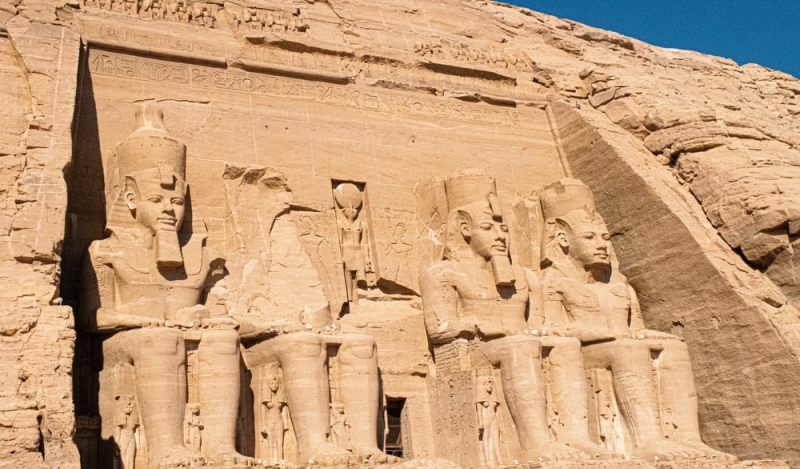
What you know about Abu Simbel Temple?
What you know about Abu Simbel Temple
Ramesses II (user-ma’at-re’ setepenre’), who ruled Egypt between 1279 and 1213 BC, built the Abu Simbel temples 280 km south of the First Cataract, the traditional southern border of Egypt. Rising 31 meters above the sands, and situated deep into wawat, the region between the first and second cataracts, the main temple, the hwt ramesses meryamun, (the Temple of Ramesses, beloved of Amun) must have been a powerful reminder to the Nubians that their land was subject to the pharaoh.
The Great Temples of Abu Simbel is also known as the southern temple and the temple of Ra-Horakhty, The Great Temple at Abu Simbel was built in Year 34 of Ramesses II’s reign and dedicated to Re-Horakhti, Amun-Re, Ptah, and Ramesses II himself as god-king27 21 Hawass, 64. . The enormous pylon-shaped façade of the temple is cut back into the pinkish stone of the cliff.
The Temple of Ramesses II, Abu Simbel, about 1880. This view looks south across the temple and further down the Nile’s west bank. The four colossal statues, two either side of the entry, depict Ramesses II wearing the double crown and nemes headdress. The crowned head of the figure second from the left, damaged by earthquakes during Ramesses II’s reign, lies on the ground in front of his feet.
Abu Simbel lies south of Aswan on the western bank of the Nile, 180 miles south of the First Cataract in what was Nubia. The site was known as Meha in ancient times and was first documented in the18th Dynasty, when Ay and Horemhebhad rock-cut chapels hewn in the hills to the south. Ramesses II, called "the Great," built seven rock-cut temples in Nubia. The rock-cut temple of Ramesses II on the west bank of the Nile at Abu Simbel, is the greatest of these. This temple was not seen by Europeans until J.J. Burckhardt discovered them in 1813.The temple, called Hwt Ramesses Meryamun, the "Temple of Ramesses, beloved of Amun,"was began fairly early in Ramesses, long reign, commissioned some time after his fifth regnal year. but not completed until his 35th regnal year. The massive facade of the main temple is dominated by the four seated colossal statues of Ramesses. These familiar representations are of Ramesses II himself. Each statue, 67 feet high, is seated on a throne and wears the double crown of Upper and Lower Egypt. Each is taller than the famed Memnon Colossus at Thebes, and all are sculpted directly from the rock face. The thrones are decorated on their sides with Nile gods symbolically uniting Egypt. Burckhardt said of the first face on the left that it "was the most expressive, youthful countenance, approaching nearer to the Grecian model of beauty than that of any ancient Egyptian figure I have seen."
Temple of Queen Nefertari
Located to the north of the Great Temple, at Abu Simbel, lies the Temple of Queen Nefertari, which is also dedicated to the mother goddess Hathor62. Usually seen in the form of a cow or asistrum (the principle attribute of the goddess) also Called the Small Temple has a front featuring four great seated colossi, two of Ramses II and two of Nefertari.
Thus the beautiful temples at Abu Simbel represent a magnificent paean to Ramesses the Great and his beautiful Queen Nefertari as gods. He was worshiped there, by Nubians and Egyptians, during his lifetime and after his death. After lying hidden beneath the sands for centuries, the temples are once again serving their original purpose, bringing eternal life to their builder and his consort .
What is the Abu Simbel Sun Festival?
The Abu Simbel Sun Festival is a dazzling event that happens at the spectacular temple of Ramses II in the south of Egypt. The event occurs twice a year - on the 22nd February and the 22nd October. The sun will shine in the sacred chamber, lighting up three of the four statues. The one left in the dark is befitting as it is the one of Ptah – God of Darkness. After watching phenomena Visitors can participate in the dancing and singing shows. The festival is a fun-filled one for any person to enjoy music, dance, food, drinking, shopping, the market, and more.

